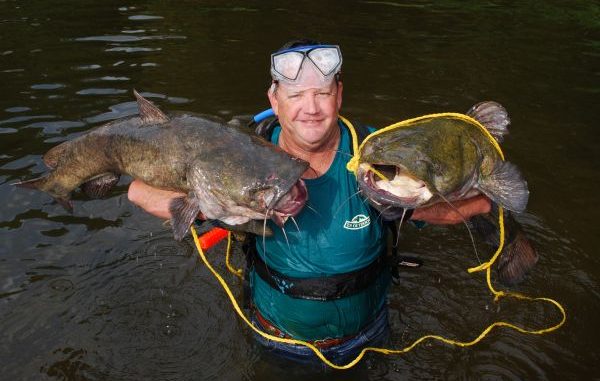
“Wrestl’in” catfish demands a few specialized tools. The piggin stick, described elsewhere, is important for more than riling up catfish. It is used in communication.
If the diver waves the end where the rope is normally snapped to above water, it means that he has lost the end of his rope. If he waves the end with the bolts, it means he needs help in the water.
These divers always use tanks. Most of the time they contain compressed air, but nitrox may also be used. It is easier on older divers. They won’t be as tired at the end of the day, but it costs twice as much as compressed air. Large 90-cubic-foot bottles are used to fill the smaller “ponies” that the divers use in action.
Each tank has a mouthpiece and regulator and each diver wears a buoyancy compensator vest. A mask is invariably used, not to aid vision — the clearest lake water is too murky to see much, but rather to simply keep water out of the diver’s eyes.
Each diver is shod with tennis or dive shoes, and they wear stainless steel fillet gloves, both to protect their hands from rough metal on the tank and from a catfish’s sandpaper-like tooth pads.
